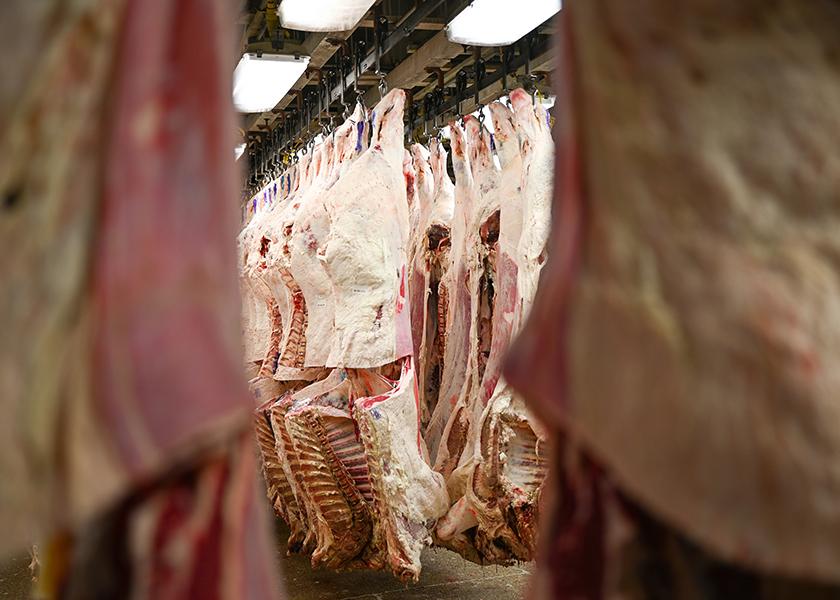Sexten: Understanding the Target

The first cattle contract library report was published February 3rd, effectively pulling back the veil on packer pricing grids. If you haven’t looked at the report yet, try searching for “cattle contracts library” to find the USDA Agricultural Marketing Service[1] page hosting the report.
If you are a cattle feeder already marketing cattle on a grid, you now have a reference point for how your grid compares to those offered to other feeders across the marketplace. If you are a rancher or backgrounder trying to produce cattle that work for the next owner and were blind to grid premiums previously, you now have insights to what the packers are paying.
Regardless of your market segment or marketing method, the increased visibility to premiums and discounts provides further guidance as to where the packers assign value. As bulls are purchased and heifer retention decisions are made, these value indicators provide selection guidance for the ultimate target market.
For grid marketing veterans, the novelty of the cattle contract library is less about premiums and discounts and more on how the contracts are structured.
USDA reports established the base price in 76% of contracts. Most would consider the reference USDA report outside an operations’ day-to-day management influence. If you look at the USDA report breakdown, the Kansas (35%), Nebraska (34%), and Texas-Oklahoma (24%) weekly direct harvest reports are easily the most used base reference price (percent of USDA report specified). The 5-Area weighted report (5%) and Iowa/Minnesota (1%) round out the total.
The high percentage of contracts using regional pricing reference points would suggest cattlemen looking to retain ownership could benefit from understanding the regional differences in feed pricing, feeding conditions and the regional market reference points. Strictly focusing on a custom feeder’s cost of gain may overlook the regional base price dynamics.
Contract specifications provide insight regarding major focus areas of management. When considering the percentage of the 178 contracts citing specifications, the major focus areas were quality at 89%, weight at 84%, under 30 months of age at 76% and cutability or yield grade at 56%.
The quality grade premium for prime averaged nearly $24/cwt while the select discount exceeded -$14/cwt. For carcasses over the contract’s choice specification, premiums averaged over $8/cwt. Yield grade (YG) premiums for the leanest, highest cutability cattle (YG1) provided a $5/cwt premium and discounts for YG 4 and 5 at -$9 and -$15/cwt respectively.
The smaller percentage of total reported contracts with a yield grade component (56%) and the lower relative discounts for YG 4 and 5 cattle compared to the premiums for the highest quality grade continue to suggest quality grade as the primary target. If further evidence is needed, consider 49% of contracts cited an average premium over $5 for Certified Angus Beef, reinforcing the packer’s quality emphasis.
Premiums and discounts for carcass weight follow the market trend toward heavier carcasses, discounting lightweights over $25/cwt and heavyweights over $12/cwt. Considering the historically low national cattle inventory, the fastest method to produce more beef is to increase carcass weights and packers are providing market signals to support this management approach.
A rapidly growing segment of the beef supply chain is beef-dairy crossbred calves. The contract library highlighted the value of beef muscle conformation to the dairy cow with discounts for dairy beef crossbreds averaging nearly $3/cwt while straight dairy-type carcasses are discounted over $28/cwt. While most operations will never deal with the management of beef-dairy crossbreds, their influence on the beef markets will continue to grow due to the absence of calving seasonality and relatively consistent performance compared to the diversity of management in native beef calves.
When cattlemen consider how to influence carcass endpoints from the ranch, a common quote I hear is “I wish the feedyard would give me carcass data on my cattle”. Alternatively, when the feedyard does provide carcass data and the outcome was not on target, I hear “The feedyard didn’t manage the cattle right”. With over two years between the breeding decision and a carcass on the rail, staying focused on all the factors impacting end-user value can be a challenge.
A recent conversation with a seedstock breeder highlighted a practical solution to the challenges above. If you want the benefit of knowing how close your cow herd is to the contract targets without the environmental influences of feedyard management, consider genetic testing. Not only do you get a snapshot of carcass potential, but more importantly you gain the ability to select the replacements that will impact your ability to achieve maternal and terminal targets for the next 5 to 10 years.
[1] USDA Agriculture Marketing Service. Cattle Contracts LIbrary Summary. Data as of 3/3/2023. Link: chrome-extension://efaidnbmnnnibpcajpcglclefindmkaj/https://www.ams.usda.gov/mnreports/ams_3663.pdf







